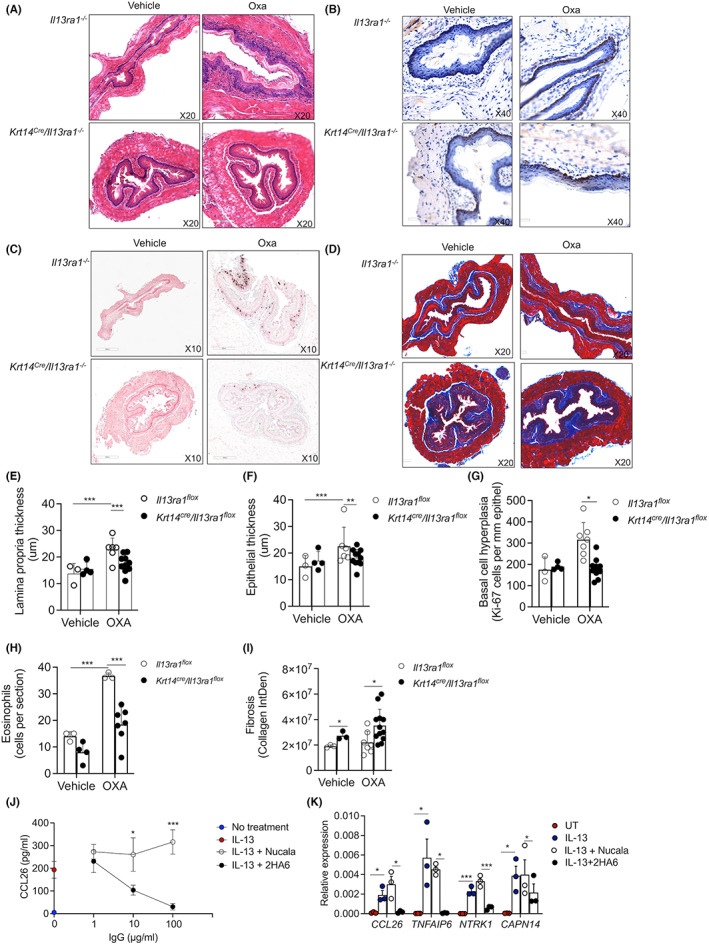FIGURE 6.

Key role for epithelial cell‐expressed IL‐13Rα1 in EoE. Il13ra1 flox and Krt14 cre /Il13ra1 flox were subjected to experimental EoE. Thereafter, histopathological analysis of the esophagus was performed. The slides were stained with H&E (A), and lamina propria (E) and epithelial (F) thickness were determined. Epithelial cell proliferation was determined using anti‐Ki67 staining (B,G). The slides were stained with anti‐major basic protein (MBP, C), and total esophageal eosinophils were quantified (H). Esophageal fibrosis was determined using Masson's trichrome staining (D, I). Representative photomicrographs of H&E (A), anti‐Ki67 (B), anti‐MBP (C), and Masson's trichrome (D) are shown. Data are representative of n = 2 experiments where each circle represents one mouse. *p < 0.05, **p < 0.01, ***p < 0.001. The ability of anti‐IL‐13Rα1 (clone 2hA6) to block IL‐13‐induced CCL26 secretion (J) and IL‐13‐induced mRNA expression of IL‐13‐target genes was determined in esophageal epithelial EPC2 cells (K). Nucala was used as a control antibody. Data are representative of n = 3 where each dot represents a different experiment, *‐p < 0.05, **‐p < 0.01, ***‐p < 0.001
